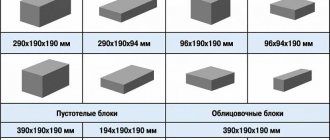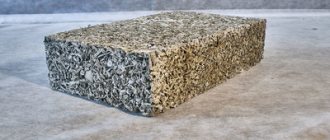How many kilograms of potatoes are in a bucket? This important question usually arises when purchasing this vegetable crop in large quantities per bucket. Then there is a desire to calculate what is more profitable, buying in buckets or kilograms? This issue is also very important in order not to overload the transport that is chosen to deliver the vegetable from the place of purchase to the place of storage.
How much does a bucket weigh
When going once again to buy products for jam, compotes, pickles, or simply stocking up, most of the population takes a bucket with them. Therefore, it would be useful to find out how many kilograms of food fit in a bucket. Potatoes have long become a popular “independent” product in our menu, as well as an indispensable component of many dishes. Therefore, this gardening food product is purchased not in kilograms, but in buckets or even bags. How much does a bucket of potatoes weigh? This question is often asked by buyers at the market, stocking up on potatoes for future use for several months at once. Today we will learn about the weight of one “standard” bucket of potatoes, as well as other products and materials.
How much does a bucket of potatoes weigh?
A 10-liter bucket weighs 6.5 - 7.5 kg, and a 12-liter bucket weighs up to 10.3 kg.
The weight of a bucket of potatoes, first of all, depends on the volume of the container itself. For example, 6.5 - 7.5 kg of potatoes can be poured into a 10 liter bucket. The value of this indicator is also affected by the fullness of the bucket - if the seller generously poured a heaping amount of potato tubers, then the total weight will increase.
In addition, the material from which the bucket is made is taken into account. So, in an enamel bucket, the weight of the empty container is added to the weight of the potatoes - about 2 kg. And the weight of potatoes poured into a galvanized bucket with a capacity of 10 liters will increase by about 1 kg.
About 10.3 kg of medium-sized tubers can be poured into a 12-liter bucket, excluding the weight of the container.
How much does a bucket of potatoes weigh? Another deciding factor is the size of the tubers in the bucket. More small potatoes will fit into a bucket than large ones, and the filling of the space will be more dense. But large, elongated potatoes leave a lot of free space in the bucket.
For comparison: if you pour small and large potatoes into two identical containers and compare the weight, then in the first case the bucket will be a little heavier.
What is the volume of grain in 1 ton?
One ton of grain contains 3.33 - 1.22 cubic meters. To convert tons to cubes and back, use the online calculator for converting tons to cubes (you need to know the density for the calculation). How the calculation is made: The calculation is made using a simple physical formula: Mass = Density * Volume.
Interesting materials:
How to charge Juul without charging? How to protect the wall near the stove? How does jargon differ from regional dialects? What is Fyodor Konyukhov famous for? What is South Africa famous for? What is Beijing famous for? What is Vasily 2 the Dark famous for? What is Poklonnaya Hill famous for? What did the old fox teach the little prince? What did Lydia Mikhailovna teach her student?
How much does a bucket of mushrooms weigh?
A bucket of mushrooms weighs from 2.5 to 10 kg. depending on the type of mushroom.
Mushrooms can differ not only in taste and general appearance, but also in density. Different types of mushrooms have different densities, which determines their weight. For example, let’s take a ten-liter container as a unit of measure. A bucket of chanterelles weighs 2.5 kg, honey mushrooms - 3 - 4 kg, saffron milk caps - 4 kg, porcini mushrooms - 4 - 6 kg, butter mushrooms - 10 kg. So, of these species, chanterelles are the lightest, and boletus mushrooms are the heaviest mushrooms by weight.
Cement bag volume
In general, the question of how much cement is contained in a bag is not so easy to answer. Let's start with the fact that packaging comes in bags of 25 kg, 40 kg and 50 kg. So we need to clarify the mass. The second point is that cement comes in different forms. With or without additives. And additives also come in different types, and different types differ in density. This means that the same weight occupies a different volume.
The weight of a bag of cement can be 25 kg, 40 kg and 50 kg
There is one more point. The density of any cement changes over time. Immediately after production, when it was poured into bags, the density is the lowest. As the ground powder is poured in, the particles become charged and capture air molecules. Therefore, freshly poured it weighs less. During transportation and storage, the charge decreases, some of the air evaporates, and the density increases. So after a month more weight is placed in the same volume. Moreover, after about a year of storage, the difference with the bulk density is significant - up to 35% of the original value.
How much does a bucket of sand weigh?
A bucket is a popular measure for many products and materials.
If we talk about sand, its weight directly depends on the type and quality. For example, a 10 liter bucket of sand for construction work will weigh about 16 kg, and a 12 liter bucket will weigh about 18 - 20 kg. For dry river sand, these figures will be 15.2 kg and 18.3 kg, respectively. But the weight of a bucket (10 liters) of wet sand is already a little heavier - approximately 18.1 kg. A 10 liter bucket of sand weighs about 16 kg, and a 12 liter bucket weighs 18 - 20 kg.
Sand mixed with dust, poured into a ten-liter bucket, will weigh about 20.7 kg, which is about four kilograms heavier than construction sand. The same difference in weight will be observed if you weigh and compare 12-liter buckets of sand of these types.
Source
Preparation of concrete
For small construction work, it is convenient to measure the number of components in buckets. This makes it easier and faster to mix good quality concrete. How many buckets of materials are needed to prepare the working composition depends on the amount of work. It is important to take into account here that all components of the concrete dough have different volumetric mass: a bucket of cement weighs approximately 15 kg, a bucket of sand weighs about 19 kg, and the mass of crushed stone weighs approximately 17.5 kg.
The optimal proportions of components in one cube of concrete dough using buckets are approximately the following: 2:5:9, where cement/sand/crushed stone, respectively. Having measured the components, they begin preparing a concrete solution of m200, which can be used both for pouring the foundation and for screeding floors, erecting porches, etc. Water is usually added to the concrete composition in an amount equal to half the volume of cement. The preparation of the working solution is carried out immediately before the start of concreting in the amount that is planned to be produced in 2 hours.
For the construction of light frame buildings, a columnar foundation is sufficient. Therefore, the concrete mass for pouring it does not imply ultra-high strength.
Preparing concrete using buckets is relevant in the following cases:
- for performing small-scale work;
- when the foundation is poured in stages;
- inaccessibility of the construction site for special equipment (concrete mixers);
- remoteness from factories supplying the finished composition.
How much does an enameled 10-liter bucket of potatoes weigh?
How many potatoes are in a 10-liter enameled (galvanized) bucket per kg?
How much does a 10 liter bucket of potatoes weigh?
A 10-liter bucket holds approximately 6.5-7.5 kg of potatoes. The weight depends on the filling of the bucket (you can pour a full bucket, or you can fill it with a big pile).
An empty enamel bucket weighs approximately 2 kg, so the weight of potatoes with a bucket will be 8.5-9.5 kg.
An empty galvanized bucket weighs approximately 1 kg, so the approximate weight of a 10-liter bucket of potatoes (together) will be approximately 7.5-8.5 kg.
- Potato riots in Rus', or why peasants were afraid of root crops more than the enemy
Potatoes in a 10-liter bucket do not hold up to 8.5 kilograms.
We weighed several buckets and it turned out that there were 6.5 kg in one bucket, and we collected another bucket and it turned out to be 6.9 kg.
If you don’t count grams, then on average an enamel bucket holds 7 kilograms of potatoes.
When you pour a large pile of potatoes (for sale), then add another kilogram and you will get 8 kg.
Potatoes are not poured into a bucket as tightly as, for example, raspberries or blueberries. The weight of a ten-liter bucket of these root vegetables also depends on their size. The larger the potato, the less weight it will have, but an average potato packs more densely, and even heaped, and can weigh around 7.5 - 8 kilograms.
An enamel bucket contains about 8 kg of medium-sized potatoes. If the potatoes are large, then there will be more voids in the vessel, therefore, fewer root vegetables will fit. If the potatoes are too small, they will fill our bucket more tightly, and there will be much less empty spaces. Taking all this into account, a 10-liter enamel bucket can hold from 7.5 to 8.5 kg of root vegetables, and if you manage to lay out a high pile, then a little more.
From let’s say five kilograms to nine kilograms. We are unlikely to gain ten kilograms, even if we cut it up. Although if you grate it, I think it will fit more. It all depends on the size of the potatoes themselves and the density of their packing in this very bucket. But the average size of a potato will be eight kilograms.
Bulk density of cement
Density is the mass of a substance divided by the volume it occupies. There are true and bulk densities for bulk materials with a fine fraction, which include cement. This material is a powdery, loose mixture of small particles obtained by grinding gypsum and clinker (limestone and baked clay). There is no tight connection between the particles, so the gaps are filled with air.
Depending on storage and transportation conditions, the density can range from 1100 kg/m3 (“fresh” product - after production) to 3200 kg/m3 (fully “set”). True density tends to its maximum value when the binder turns into a monolith.
Portland cement: what is it?
For construction calculations, bulk density is taken. To calculate how much cement will fit in a 10 or 12 liter container, you need to multiply the bulk density value by the volume in cubic meters. Recall that a liter is also a unit of volume:
Bulk Density
Bulk density takes into account the amount of air that can enter certain containers along with potato tubers when they are filled. It is also calculated taking into account the fact that some materials are capable of compaction. Using volumetric density, it becomes possible to calculate the mass of a volume in loose, loosely poured, and compacted states. Although compacting potato tubers is certainly contraindicated. They are injured and, when compacted, are subject to rapid deterioration. In this case, these can only be theoretical calculations.
How many liters in a 50 kg bag of cement
The loose state of cement explains its looseness and leads to the fact that the density “walks” in the range from 1100 to 1600 kg/m3. For approximate estimates, the average value is taken - 1300 kg/m3. That is, in one cube (1 m3 = 1000 l) there will be 1300 kg of cement. Converted per liter we get 1.3 kg/l.
Then exactly 50 kilograms of cement will fit into a 38.5 liter container. In other packages we get the following volumes:
The volume in liters is calculated similarly for containers with a different mass.
Cement mortar proportions
How much coal is in one cubic meter?
A cubic meter can contain from 1200 to 1500 kg of coal. Accordingly, if translated into tones, 1,2, or one and a half tones cubed. The moisture content of coal must also be taken into account, in addition to its fraction and density. When calculating back, tones to cubic meters, we find out how many kilograms are in a ton; there are 1000 kg in a ton.
Interesting materials:
How to make a picture for the background in a presentation? How to make a spoiler picture in Discord on your phone? How to make a halva card? How to make a Qiwi wallet card? How to make a red and white card? How to make a cap hard? How to make a cap hard? How to make a hashtag on MacBook? How to make a hashtag in a story? How to make good nectar in Sims 3?
How many kilograms of potatoes are in a 10 liter bucket?
The easiest way to determine this is experimentally by pouring root vegetables into a container. Then you should weigh the full bucket on a scale and subtract the weight of the bucket itself. But the resulting indicator cannot be considered a constant value and the answer to the question: how to find out how many kilograms of potatoes are in a bucket? After all, the weight of tubers in the same container will fluctuate, depending on their size and shape. This value is also affected by the fullness of the bucket: if potato tubers with a “slide” are generously poured into it, then the total weight will increase.
Question: how many kilograms of potatoes are in a 10-liter bucket? Answer: the volumetric weight or bulk density of potatoes in a standard bucket can be from 6.5 to 7.5 kg. This is true for a bucket filled without a slide with medium-sized tubers.
A container filled with large root vegetables will be lighter in weight than one of the same volume but containing small “peas”. After all, the air-filled spaces between large potatoes will be large, but they have no weight. When filling a bucket with tubers of a regular round shape, there will be less free space than in a container with oblong potatoes.
Therefore, to the question of how many kilograms of potatoes are in a 10-liter, 5- or 15-liter bucket, there is no definite answer. With approximate accuracy, you can only measure or calculate the weight for root crops of approximately the same size.
A table of the approximate weight of one potato for tubers of different sizes can help in the calculations
When buying potatoes “from hand,” you can often find sellers who sell potatoes not by weight, but in buckets, so if you decide to buy a bucket of potatoes and want to know in advance whether it is profitable to buy this way and what the weight of the purchased potatoes will be, you need to know how much does a bucket of potatoes weigh, taking into account the volume of the bucket (5, 10, 12 liters).
Correct Method
The surest way to determine the volumetric mass for potatoes is through bulk density. What volume is usually chosen to calculate the mass of tubers in a mound? There are several possible options here:
- they want to know the mass of the volume relative to 1 cubic meter;
- or are interested in household containers: bags, buckets.
Most often people ask the question: how many kilograms of potatoes are in a bucket? More precisely, they are interested in both the volumetric weight of the potato and its bulk density.
How much does a bucket of potatoes weigh?
A 10-liter bucket weighs 6.5 - 7.5 kg, and a 12-liter bucket weighs up to 10.3 kg.
The weight of a bucket of potatoes, first of all, depends on the volume of the container itself. For example, 6.5 - 7.5 kg of potatoes can be poured into a 10 liter bucket. The value of this indicator is also affected by the fullness of the bucket - if the seller generously poured a heaping amount of potato tubers, then the total weight will increase.
- What does a million rubles in 5000 banknotes look like and how much does it weigh?
Features of a galvanized bucket
As a rule, a galvanized bucket is a single-seam connection of a sheet of steel to which the bottom, ears for attaching the handle and the handle itself are attached. In this case, the seam is treated with a sealed compound that does not allow liquid to pass through.
The handle also consists of galvanized wire. The question arises: how many liters fit in a galvanized bucket? As a rule, the capacity varies: these can be buckets of 5, 9, 10 and 12 liters.
It is important to remember that in a galvanized bucket it is prohibited:
- Boiling;
- Pickling;
- Salting;
- Soaking food.
These substances negatively affect galvanized layers, changing their composition, and this in turn can lead to the destruction of joints.
So how much material is there in question?
High-quality, freshly produced cement GOST 31108 is a matter with a fairly loose structure that consists of a number of small particles; they look like dust. Microscopic air particles can be found in between.
Cement
Cement in a loosened state is characterized by a bulk density in the range of 1100-1600 kg/m3. This indicator becomes the basis for the percentage of cement in the prepared mixture, which will ultimately affect the strength of the solid solution.
To simplify the calculations, the bulk density is taken as one thousand three hundred kg/m3, respectively, in a fifty-kilogram container the identical mass of cement is 42 liters.
If we take this indicator as a basis, it will not be difficult to calculate the number of buckets of bags of cement. If we take into account the different indicators of capacitive volumes that will be used for measurements, the indicators for a 50-kilogram bag will be as follows:
- 10 liter capacity – 4.2 buckets;
- 12 liter capacity – 3.5 buckets;
- capacity for 16 liters - 2.6 buckets.
For more information on how many buckets are in a bag of cement, watch the video:
Average bulk density of different components and materials
Unfortunately, the bulk density cannot always be found on the packaging. And if you need to find out this property for several components, you will have to search for a long time on the Internet. For convenience, we provide a list of the most popular components and materials with their bulk density.
- Cement (in a loose state) - 1100-1200 kg/m3;
- Cement (in a compacted state) - 1500-1600 kg/m3;
- Cement (average value) - 1300 kg/m3;
- Sand (average value) - 1400 kg/m3;
- Crushed stone (slag) - 800 kg/m3;
- Gravel (fine) - 1700 kg/m3.
It is worth remembering that the bulk densities presented above are average. They are taken based on statistical averages. There may be special cases in which the bulk density will differ significantly.
Basics of correct calculation
When independently calculating the mass of a certain volume of tubers, the specific gravity of root crops is usually taken as the initial value, which can be found out by finding a table of physical properties. But with this approach, the result will be a significantly larger mass volume than the actual weight in kilograms, which is detected when checked on the scale.
The error of this approach is that the calculations were carried out based on the true density of the potato. At the same time, its peculiar shape, which is inherent in tubers in nature, was not taken into account at all. When calculating the mass of any volume of root crops, one should take into account not the true density (specific gravity), but the volumetric one.
Source











